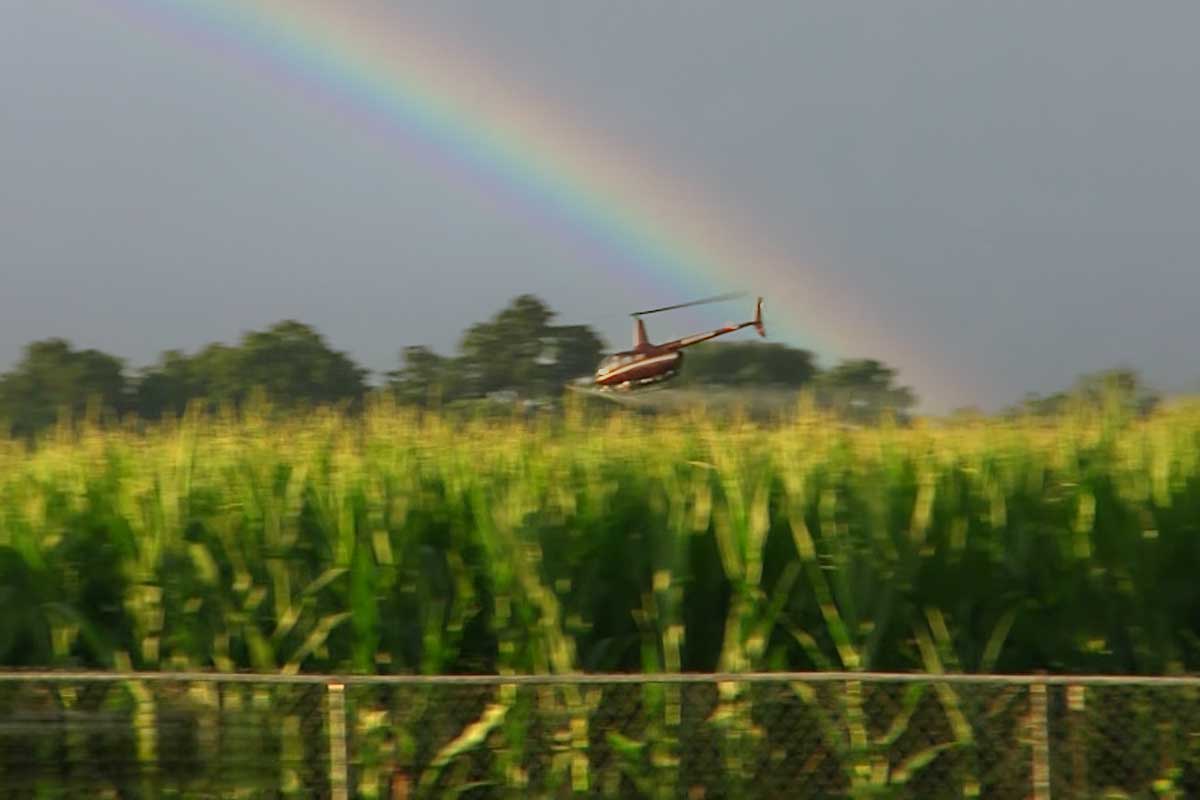Based on a 2019 survey conducted by the National Agricultural Aviation Association (NAAA), skilled pilots of both aircraft and helicopters treat an estimated 127 million acres of U.S. cropland annually. To put this into context, that is one-third of the 347 million acres of cropland in the United States used for crop production. Specifically, it is the soybeans, corn, rice, and cotton farmers that work hand in hand with these vital agricultural spray operators/pilots (1560 of them) in America.
Here is another interesting fact from the NAAA survey: While 84% of these ag spray operators perform this work with fixed-wing assets, 16% of them use helicopters like the Robinson R44 and R66 to spray crops.
 For more than a decade, Rotorcorp has been serving these skilled and essential ag operators as their virtual parts department. We know better than most that keeping their Robinson helicopters flying is how they keep their farming customers happy and their business thriving. They log a lot of aggressive flight hours doing this kind of work, so they prioritize proactive maintenance. But they also need to be ready for the unexpected.
For more than a decade, Rotorcorp has been serving these skilled and essential ag operators as their virtual parts department. We know better than most that keeping their Robinson helicopters flying is how they keep their farming customers happy and their business thriving. They log a lot of aggressive flight hours doing this kind of work, so they prioritize proactive maintenance. But they also need to be ready for the unexpected.
For example, it’s hard to predict when an inadvertent bird strike might occur, but having the parts needed to repair any damage is essential if they are to keep flying.
That means that they need ready access to an available inventory of helicopter parts to handle routine maintenance as well as for needed repairs stemming from their unique flying conditions.
Factor in that often these helicopters are flying in areas outside of their home base. Rotorcorp’s advanced shipping and logistics capabilities mean that we can ship in-stock parts to virtually any location in the United States with next-day shipping.
We thank our ag spraying customers for the important role they play in facilitating the growth of the grains, fruits, vegetables, and fibers that feed and clothe the planet. We also thank them for their business and for entrusting Rotorcorp to serve their needs.
 Lastly, I wanted to give a shout-out to the organization that represents the profession, the National Agricultural Aviation Association. The NAAA provides members with a host of benefits. They represent the industry’s interest in Washington, DC. They offer educational resources and training. They work to gain government investment for aerial application research to develop technologies that can mitigate drift and make applications more efficient and cost-effective.
Lastly, I wanted to give a shout-out to the organization that represents the profession, the National Agricultural Aviation Association. The NAAA provides members with a host of benefits. They represent the industry’s interest in Washington, DC. They offer educational resources and training. They work to gain government investment for aerial application research to develop technologies that can mitigate drift and make applications more efficient and cost-effective.
For these reasons, as well as the work they do to both promote and foster a positive image of the aerial application industry, I am proud to be counted as a member.

